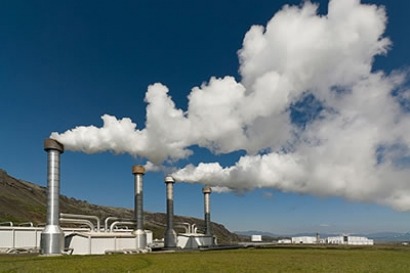
If that’s done, according to the report, underground heat sources may account for as much as 3.5 percent of worldwide electricity within four decades, up from 0.3 percent today. By that time, the Paris based agency said, installed geothermal capacity could be as high as 200 GW.
“This would be an important contribution to global efforts of reducing carbon emissions, using a sustainable and reliable source of energy that is available all over the world, and does not fluctuate with the weather or season,” said IEA Executive Director Nobuo Tanaka, who launched the report, Technology Roadmap: Geothermal heat and power, at the EURELECTRIC annual conference in Stockholm.
Taking advantage of underground heat resources that are widely available will help reduce greenhouse gas emissions. High costs have hampered development of power geothermal power plants.
Incentive schemes, databases and permits
One key area of action for governments identified in the report is the introduction of incentive schemes that will encourage the development of geothermal technologies that are not yet commercially viable. These include feed-in tariffs, which are payments to anyone who generates electricity for a grid using renewable sources of energy.
In addition, the report stresses that publicly available databases should be developed, which could be used to assess, access and exploit geothermal resources throughout the world. “[This] requires co-operation among geothermal industry groupings, national authorities and research institutes,” wrote Milou Beerepoot, the report’s author and a senior analyst at the IEA.
A third proposed area of action outlined in the report focuses on overcoming the barrier of obtaining permits, which are necessary for all new geothermal plants.
“Many countries that lack specific laws for geothermal resources currently process geothermal permits under mining laws that were conceived with objectives other than renewable energy production,” Beerepoot writes. “Permitting procedures can consist of numerous steps, resulting in long lead times. The lack of regulation for geothermal energy is inhibiting the effective exploitation of the resource.”
Utilising emerging technologies
To date, efforts to extract geothermal energy have concentrated on areas with naturally occurring water or steam. (The water or steam, commonly found near tectonic plate boundaries and often associated with volcanoes and seismic activities, is easily accessible as the permeable rock in the earth’s crust is already fractured).
However, the vast majority of the world’s geothermal energy within drilling reach – which can be up to 5 kilometres – is found in rock that is relatively dry and impermeable. These areas, which are found all over the world and contain insufficient water for natural exploration, are known as hot-rock resources.
Currently, technologies that allow energy to be tapped from hot-rock resources – the best known is enhanced geothermal systems (EGS) – are still in demonstration stage, but the IEA report suggests that governments should provide sustained and substantially high research, development and demonstration resources to plan and develop at least 50 enhanced EGS pilot plants during the next decade.
With these systems, a well is drilled deep into the ground, typically below 1.5 kilometres. Water is then injected into the well at sufficient pressure so as to create fractures in the rock. Other wells are then drilled in order to suck up the water, which has been heated by the hot rocks.
“If these enhanced geothermal systems are developed further, this will significantly open up global exploration of geothermal resources,” Beerepoot said.
Capital costs for geothermal projects varied from $2,000 a kilowatt to $5,900 in 2008, depending on the technology, according to the report.
The report is the latest in the IEA series of technology roadmaps, which aim to guide governments and industry on the actions and milestones needed to achieve the potential for a full range of clean energy technologies.
For additional information:

